During the last Ice Age, the High Coast and the Kvarken Archipelago were covered and pressed down by glaciers. As the ice cap began to melt, the land slowly began to rise. Since the ice cap retreated from the High Coast and the Kvarken Archipelago about 9,600 years ago, the land has risen about 285 meters above the present sea level. Nowhere else in the world has the land uplift been so extensive after the last Ice Age as in the High Coast and the Kvarken Archipelago. The current land uplift is 8 mm per year. The 5,600 islands of the Kvarken Archipelago features unusual ridged washboard moraines, also called De Geer Moraines, formed by the melting of the continental ice cap10,000 to 24,000 years ago. Due to the land uplift, the High Coast and the Kvarken Archipelago are continuously rising from the sea. No one knows how much more the land is going to rise before the High Coast and the Kvarken Archipelago have returned to their original position. Everywhere you can see the special geological formations carved by the three km thick ice cap that once covered the region. People have been living in the High Coast and Kvarken Archipelago ever since the ice melted, supporting themselves through fishing, hunting and agriculture. The High Coast is part of the east coast of Sweden on the Gulf of Bothnia, the northernmost arm of the Baltic Sea, the Kvarken Archipelago is part of the west coast of Finland on the Gulf of Bothnia. The Swedish High Coast was declared a UNESCO World Heritage in 2000. The UNESCO World Heritage was extended to include the Finnish Kvarken Archipelago in 2006. This fascinating and ever-changing area is a natural World Heritage Site.
www.werelderfgoedfotos.nl © Copyright World Heritage Photos
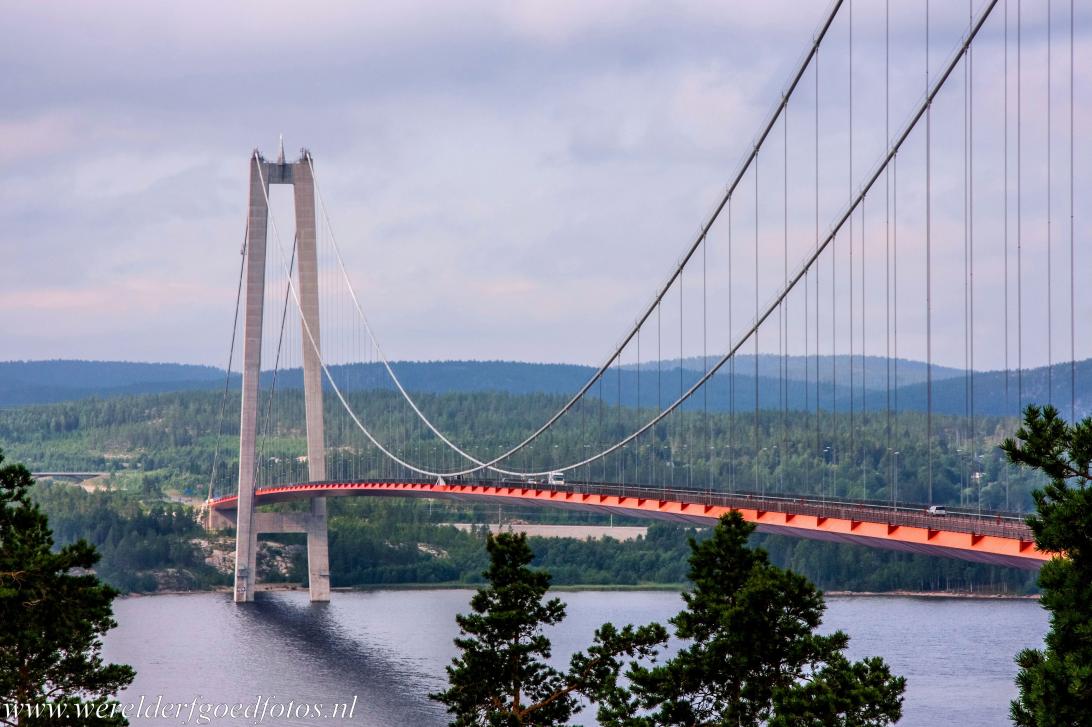
High Coast / Kvarken Archipelago: The Högakustenbron, the High Coast Bridge is part of the High Coast Trail, which leads through the impressive landscape of the High Coast in Sweden. The High Coast Bridge is a suspension bridge across the 1400 metres wide Ängermanálven River. The bridge was constructed in the period 1993-1997 and is made of concrete and steel, the height of the pillars is 180 metres, the total length of the bridge is 1876 metres. The High Coast Bridge is part of the UNESCO World Heritage: High Coast / Kvarken Archipelago.

High Coast / Kvarken Archipelago: The Högakustenbron, the High Coast Bridge is part of the High Coast Trail, which leads through the impressive landscape of the High Coast in Sweden. The High Coast Bridge is a suspension bridge across the 1400 metres wide Ängermanálven River. The bridge was constructed in the period 1993-1997 and is made of concrete and steel, the height of the pillars is 180 metres, the total length of the bridge is 1876 metres. The High Coast Bridge is part of the UNESCO World Heritage: High Coast / Kvarken Archipelago.
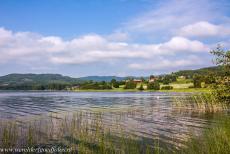
The High Coast / Kvarken Archipelago has the largest land uplift in the world. Since the ice sheet retreated from the High Coast and the Kvarken Archipelago about 9,600 years ago, the land has risen 285 metres above the present sea level, the process of rising land is still taken place today, the current land uplift is 8 mm per year. No one knows how much more the land is going to rise before the High Coast and the Kvarken Archipelago have returned to their original position. The High Coast in Sweden is known for having the highest coastline in the world.
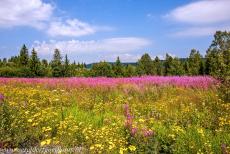
High Coast Kvarken / Archipelago: A field of flowering rosebay willowherb in the High Coast. During the Last Ice Age, Scandinavia was covered by a thick layer of ice. The ice sheet over the High Coast was more than three kilometres thick and pressed down the land underneath. Much later, when the weather became warmer, the ice began to melt and the land started to rise, a process of thousands of years. The High Coast is located in Ångermanland, a Swedish province on the coast of the Gulf of Bothnia.
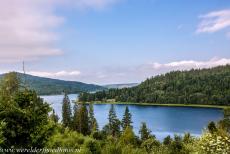
High Coast / Kvarken Archipelago: The striking landscape of the High Coast near Nordingrå. The municipality of Nordingrå is located on the Vågsfjärden, a former bay of the Gulf of Bothnia, the bay became a lake due to the land uplift. The coastline is continuously rising out of the Gulf of Bothnia, a unique geological process known as the post glacial rebound. The High Coast and the Kvarken Archipelago areas were pressed down by glaciers, as the thick ice sheet began to melt, the land slowly began to rise. Today, this process is still ongoing.
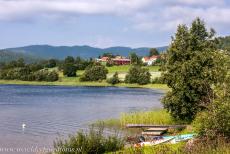
High Coast / Kvarken Archipelago: A small arm of the Gulf of Bothnia and new land from the sea in the Swedish High Coast. The landscape is continuously changing shape due to the post glacial rebound, approximately 9,600 years ago. New islands rise out of the Gulf of Bothnia, bays and inlets become separated from the sea and become lakes or wetlands. The highest points in the landscape are the wooded hilltops. The icecap that once covered Scandinavia has transformed the landscape of the High Coast and Kvarken Archipelago for ever.
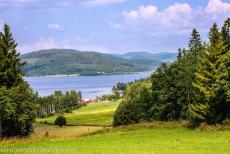
The High Coast and the Kvarken Archipelago are the best places in the world to observe and understand the concept of the post glacial rebound, also called glacial isostatic adjustment or crustal rebound, which means that the crust of the earth is returning to its original position after having been pressed down by heavy glaciers over a series of glacial periods. When the ice sheet melted, the earth began to rise upwards to its original position. This land uplift has created the unique and ever-changing landscape of the High Coast.
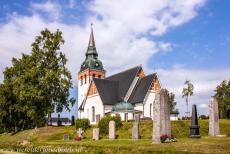
High Coast / Kvarken Archipelago: The church of Ullånger is a medieval building, it was built of gray stone, the church houses a medieval reliquary, known as the Ullånger shrine. Ullånger is one of the tiny villages on the High Coast region in Sweden along the High Coast Trail. The trail passes through the High Coast area from the south border nearby Hornöberget, situated close to the Högakustenbron, the High Coast Bridge, to the north border of the High Coast area near Örnsköldsvik.
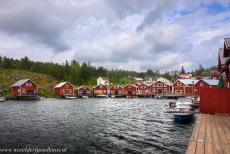
High Coast / Kvarken Archipelago: The 17th century pittoresque fishing village of Bönhamn in Sweden. The houses are painted in the characteristic Falu Röd, a red colour strongly associated with Swedish culture. Almost every house has its own pier. Bönhamn is an isolated village in the heart of the High Coast. Bönhamn lies enclosed by wooded hillsides on a small peninsula in the Gulf of Bothnia. People have been living in the High Coast and Kvarken Archipelago ever since the ice cap melted, supporting themselves through fishing, hunting and agriculture.
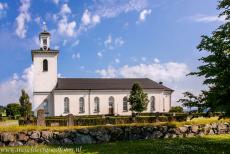
High Coast / Kvarken Archipelago: The Nora Skog Church is situated in Skog, a small village near Kramfors, in the stunning landscape of the High Coast in Sweden. The Nora Church was built in 1786, some parts of the inventory are much older, such as an image of the Virgin Mary and the remains of a font. Kramfors is connected to Härnösand by the Högakustenbron. Härnösand is the southernmost municipality in the High Coast. Örnsköldsvik is the northernmost municipality in the area. The High Coast is a popular destination for nature lovers and hikers.
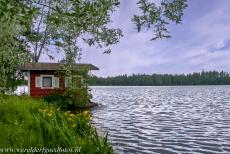
High Coast / Kvarken Archipelago: An idyllic place on the Gulf of Bothnia in Finland. The Gulf of Bothnia is an extension of the Baltic Sea, it is bordered in the west by the High Coast in Sweden and in the east by the Kvarken Archipelago in Finland. Nowhere else in the world has the land uplift been so extensive after the Last Ice Age as in the High Coast / Kvarken Archipelago. The High Coast gained the status as a UNESCO World Heritage in 2000 and was extended to include the Kvarken Archipelago in 2006.
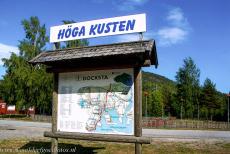
The High Coast / Kvarken Archipelago: There are several hiking trails through the Swedish High Coast, among them the Höga Kustenleden, the High Coast Trail, the route is approximately 129 km long and consists of 13 stages, and the Världsarvsleden, a 100 km long hiking trail that runs through the area around Nordingrå, the route is divided into 14 stages. Some stages of the High Coast Trail overlap those of the Världsarvsleden trail. The High Coast / Kvarken Archipelago is a transboundary UNESCO World Heritage and also a natural UNESCO World Heritage Site.
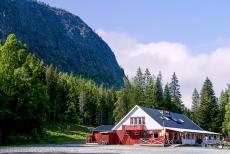
High Coast / Kvarken Archipelago: The 295 metres high Skuleberget, the Skule Mountain. The Skuleberget, Skule Mountain, offers beautiful views of the shoreline of the Swedish High Coast. The unique landscape of the High Coast is characterized by steep granite cliffs, hillsides covered by woodland, wooded valleys with grassy meadow, deep bays and rocky islands rising out of the Gulf of Bothnia, a northern extension of the Baltic Sea. The High Coast Visitor Centre is located at the foot of Skuleberget Mountain.
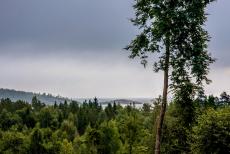
High Coast / Kvarken Archipelago: The 5600 islands of the Finnish Kvarken Archipelago features unusual ridged washboard moraines, known as De Geer Moraines, formed by the melting of the continental ice sheet 10,000 to 24,000 years ago, the ice sheet covered all of Scandinavia. Every year, a square kilometre new land rises in the Kvarken Archipelago. The Kvarken Archipelago is a huge area on the west coast of Finland, the archipelago is part of the UNESCO World Heritage Site: High Coast / Kvarken Archipelago.
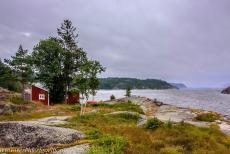
The High Coast in Sweden and the Kvarken Archipelago in Finland show how the glacial periods, the glacial rebound and the forces of the sea has affected the landscape and its flora and fauna, it makes the High Coast and the Kvarken Archipelago unique in the world. The High Coast and the Kvarken Archipelago has the largest land uplift in the world. Currently, the land rises 8 mm each year and about one square kilometre of new land is created each year. Together, the High Coast and the Kvarken Archipelago form a transboundary UNESCO World Heritage.
